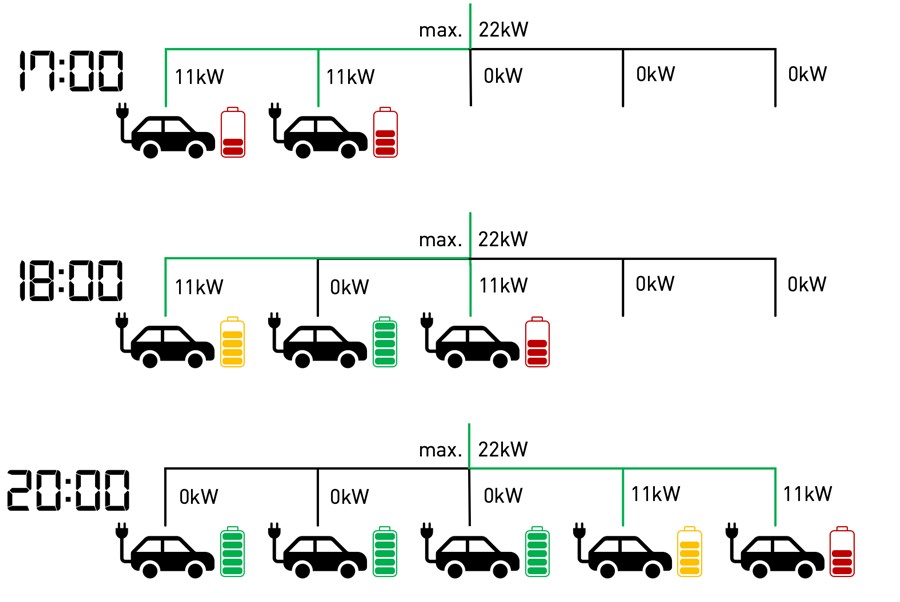Load Management Electric Car Charging

Load Management Requirements in Electric Car Charging
Load management is required where the combined power required to charge all cars plugged in exceed the building’s electrical supply infrastructure for charging EVs, whether it be at a DB, sub-board or MSB level. Whilst this functionality is unlikely to be required in the near term, it will be crucial in ensuring that as close to 100% of lot owners as possible can charge their EVs in the future. Remember an EV charging station has a power factor of 1 unless load management is available. This is because EV’s require a large amount of electricity for potentially hours at a time. Each EV Charger is the equivalent of adding a commercial grade air conditioning system.
Load Management is the most advanced safety feature offered by eoGenius system. This feature helps protect the properties’ electrical infrastructure while maintaining efficient operation of the Charging Infrastructure.
Unlike other appliances, EV charging stations consume a large amount of power when in use. If there isn’t any form of load control, these stations may cause unexpected power outages or damage the electrical Infrastructure of the property.
The eoGenius system has the functionality and capability to do 3 forms of load management with ALM being the most advanced form of dynamically managing the EV charging system based on available power.
The image below summaries the requirement for load management in an apartment situation. The available load 22kW is distributed as safely as the residents plug in, the load is limited to ensure the buildings electricity supply is safe.
Load management allows for more powerful EV Chargers to be installed with the buildings power resources being shared amongst the fleet of chargers. Therefore a 22kW system can be installed instead of a 3.7kW charger with the load balanced automatically by the EO Hub. This is essential for vehicles such as Tesla that have large batteries which require fast chargers to provide the necessary range. A Tesla charging station with load management provides increasing range without the required electrical upgrades.
The EO Genius offers 3 forms of Load Management to help maximize charging speeds.
1. Static Load Management
In this option, the eoGenius has a maximum available power limit set by the charging station manager via the eoCloud. The eoHUB then ensures that the entire EV charging system does not exceed that assigned limited current.
2. Active Load Management
The EO Hub constantly measures the power consumption of the whole building, compares it with the total power capacity of the building and distribute the available power to the EV charging stations.
This option utilises Current Transformers (CT) installed at the switch board. The eoHub measures the current consumption of the site and actively evaluates what amount of power the charging station can use. If the site’s consumption increases then the power available to the charging station decreases and vice versa. The threshold, therefore, changes dynamically every second.
ALM is very advanced technology with the eoGenius and comes standard without requiring expensive add ons and commissioning processes.
3. Scheduled EV Charging
This option simply allows the owner to specify the maximum current limit of each charging station on an hour by hour basis.
Why work harder when you can work smarter? Plug the EO Genius and Cloud system into your business or development and take advantage of the world’s most powerful load management system. This will allow you to minimise your infrastructure upgrades and increase the performance of your charging stations. The EO cloud system futureproofs your investment and ensures that your charging stations match the potential of your business and fleet. Learn more about our chargepoint management software


